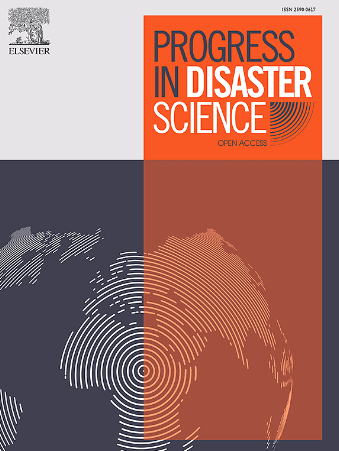Urban morphology and disaster risk reduction: A systematic literature review
IF 3.8
Q3 ENVIRONMENTAL SCIENCES
引用次数: 0
Abstract
Frequent climate change increasingly exposes cities to multi-disaster risks, directly threatening human safety and well-being. Urban morphology shares theoretical content and spatiotemporal characteristics with Disaster Risk Reduction (DRR). Exploring the relationship between urban form and disaster risk is particularly important to guide urban design and policymaking. To understand how urban form contributes to DRR, this study employed bibliometric and content analyses to review relevant literature based on a theoretical study rooted in urban morphology and DRR. Specifically, this review examined existing research trends, and the methods, data, and key elements of urban form utilized at different scales. The result reveals the progress in urban morphology and DRR research, which is driven by global frameworks such as the Yokohama Strategy, Hyogo Framework for Action, and Sendai Framework for Disaster Risk Reduction. Key gaps include spatiotemporal complexities, precise disaster risk data, and sociocultural factors. Quantitative methods dominate current research, but the integration of qualitative methods including transect walks, stakeholder interviews and cultural mapping provides complementary insights into the socio-cultural dimensions behind urban form, and implicit disaster response mechanisms in urban resilience. Future research should broaden cross-regional studies, incorporate multi-hazard perspectives, and integrate disaster cycles to develop more comprehensive and globally applicable policies.
城市形态与减少灾害风险:系统文献综述
频繁的气候变化日益使城市面临多重灾害风险,直接威胁到人类的安全和福祉。城市形态与灾害风险降低具有共同的理论内容和时空特征。探索城市形态与灾害风险之间的关系对于指导城市设计和政策制定尤为重要。为了解城市形态对DRR的影响,本研究在基于城市形态和DRR的理论研究基础上,采用文献计量学和内容分析法对相关文献进行了梳理。具体而言,本文回顾了现有的研究趋势,以及在不同尺度上使用的城市形态的方法、数据和关键要素。结果揭示了城市形态和减灾研究的进展,这是由横滨战略、兵库行动框架和仙台减少灾害风险框架等全球框架推动的。主要差距包括时空复杂性、精确的灾害风险数据和社会文化因素。定量方法在目前的研究中占主导地位,但包括样带步行、利益相关者访谈和文化测绘在内的定性方法的整合,为城市形态背后的社会文化维度以及城市弹性中隐含的灾害响应机制提供了补充见解。未来的研究应扩大跨区域研究,纳入多灾害视角,整合灾害周期,以制定更全面和全球适用的政策。
本文章由计算机程序翻译,如有差异,请以英文原文为准。
求助全文
约1分钟内获得全文
求助全文
来源期刊

Progress in Disaster Science
Social Sciences-Safety Research
CiteScore
14.60
自引率
3.20%
发文量
51
审稿时长
12 weeks
期刊介绍:
Progress in Disaster Science is a Gold Open Access journal focusing on integrating research and policy in disaster research, and publishes original research papers and invited viewpoint articles on disaster risk reduction; response; emergency management and recovery.
A key part of the Journal's Publication output will see key experts invited to assess and comment on the current trends in disaster research, as well as highlight key papers.
 求助内容:
求助内容: 应助结果提醒方式:
应助结果提醒方式:


